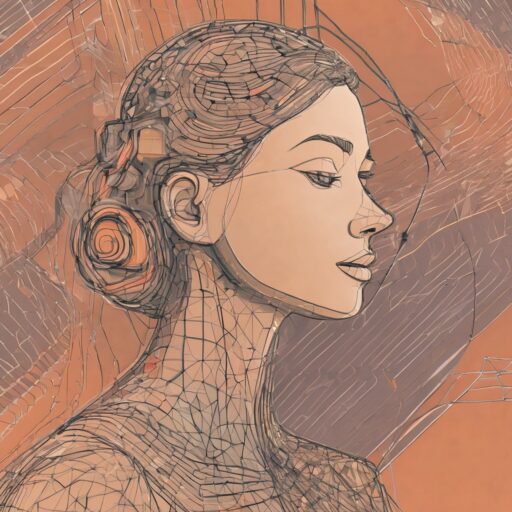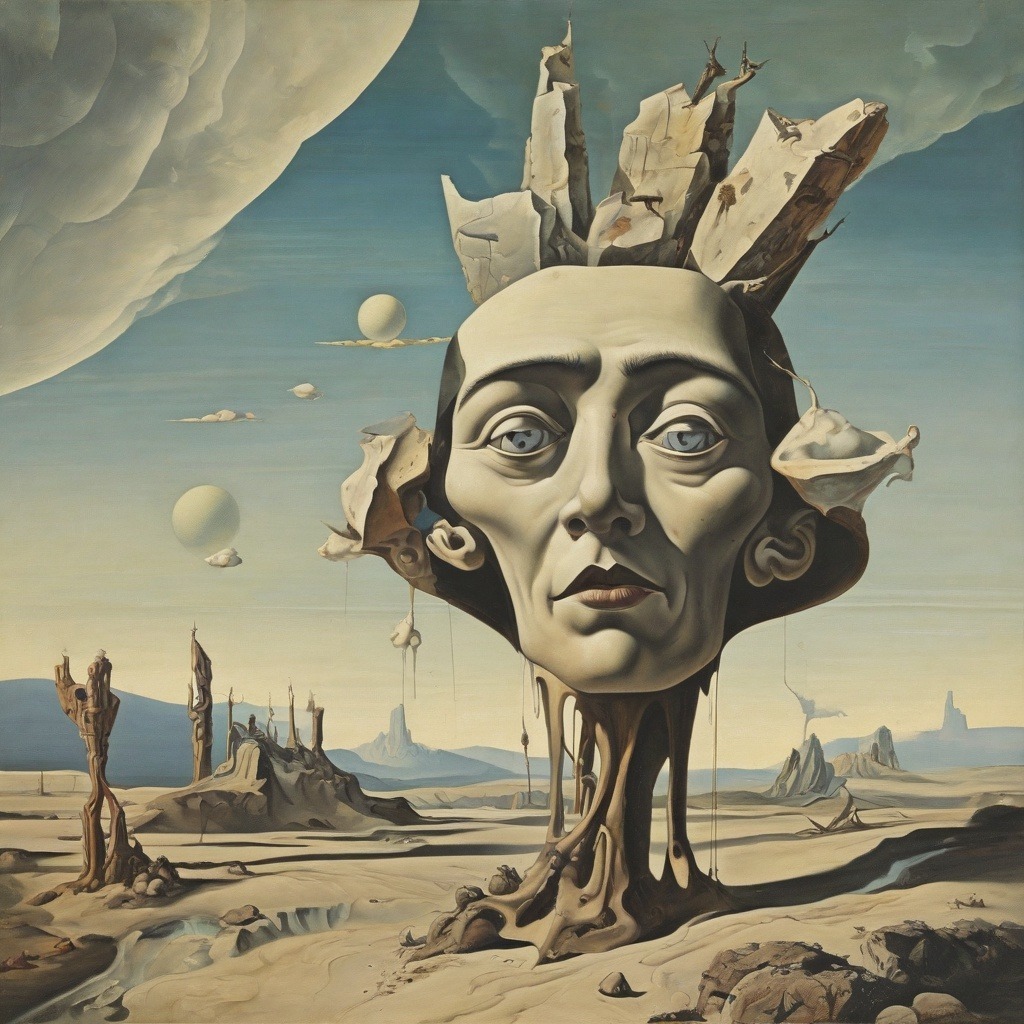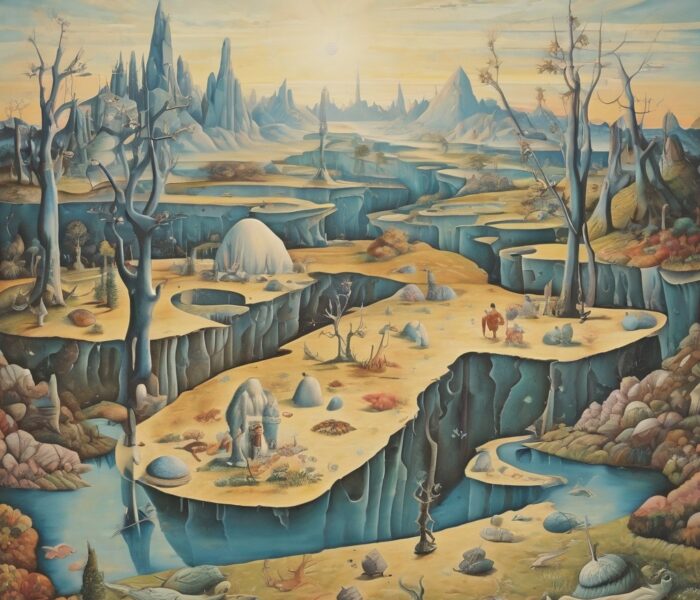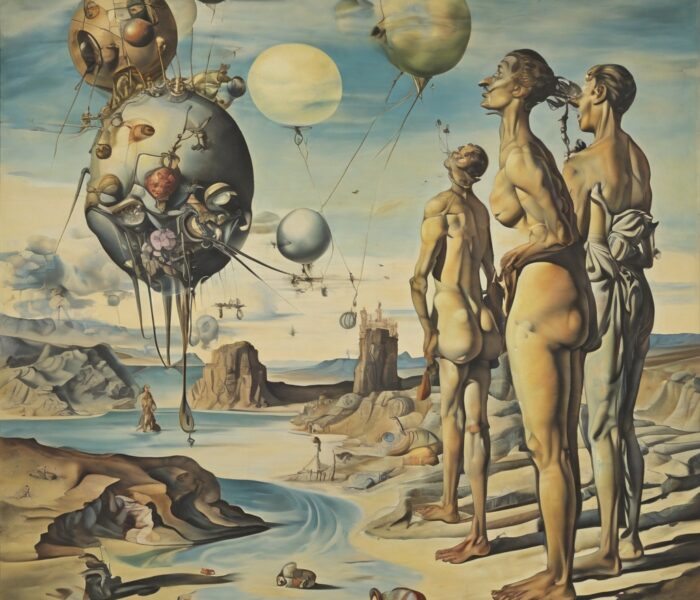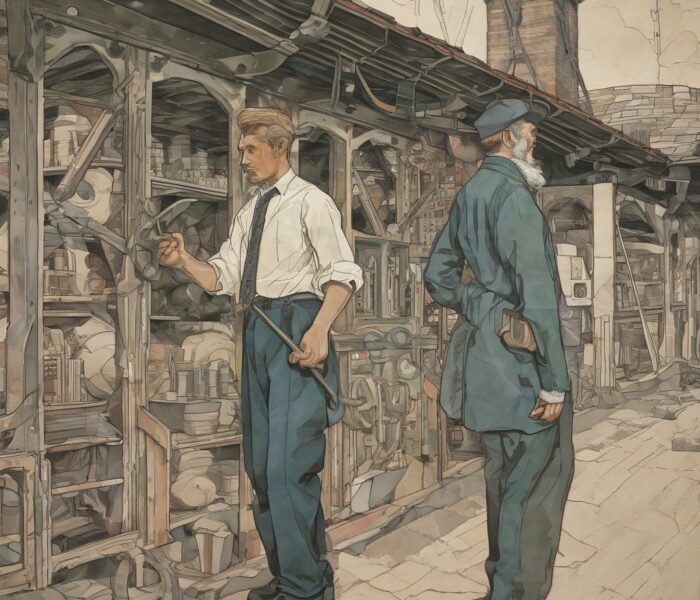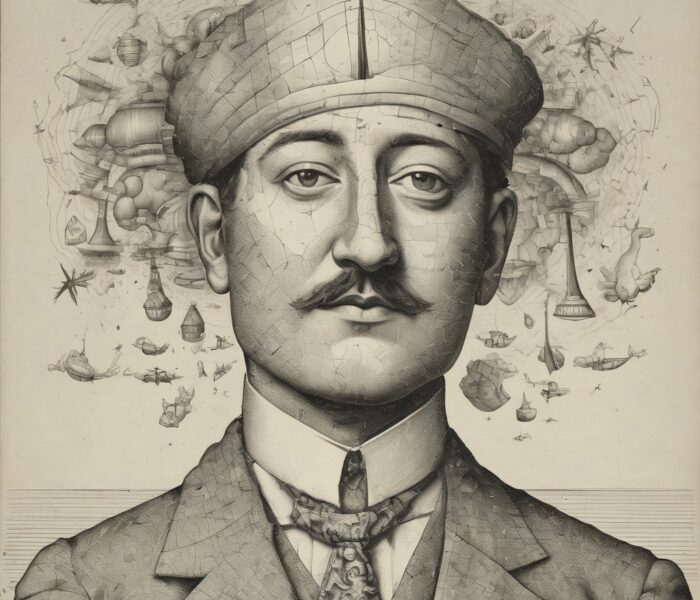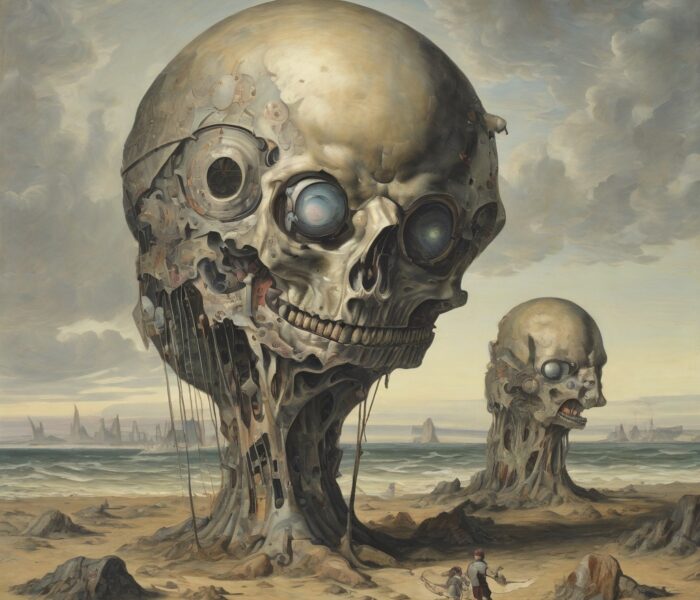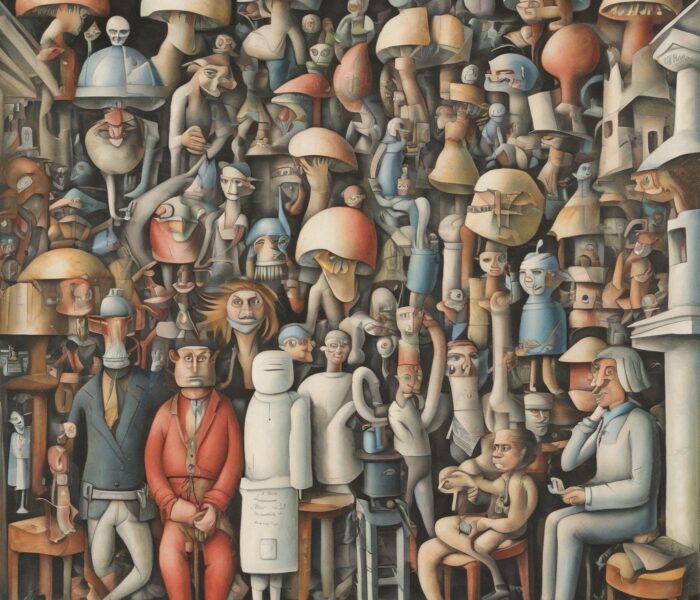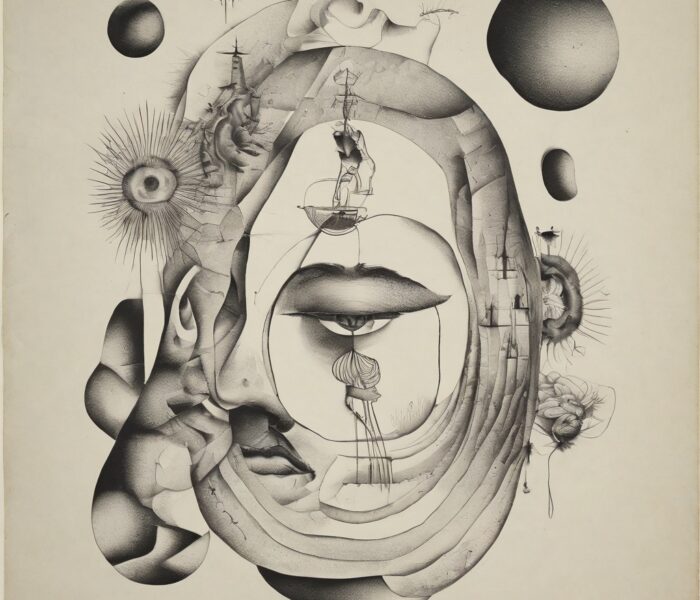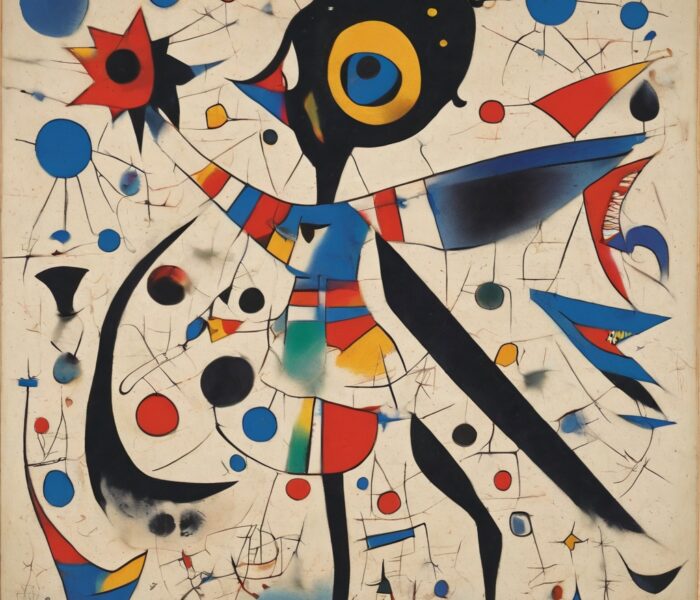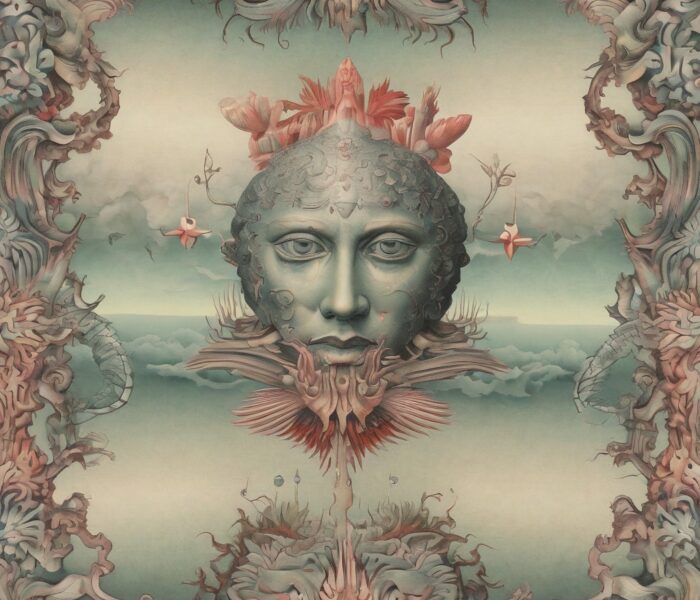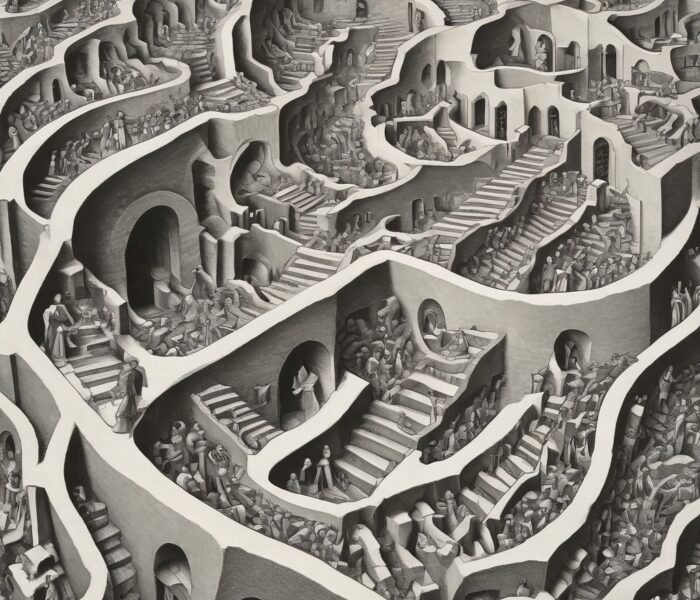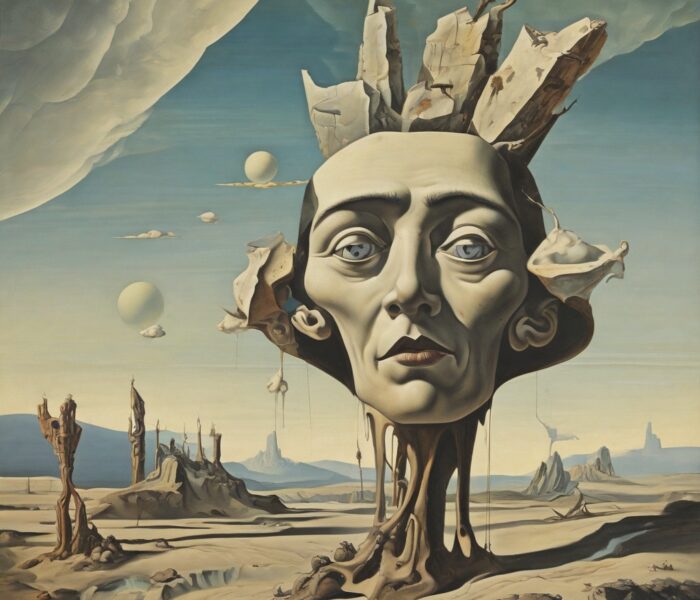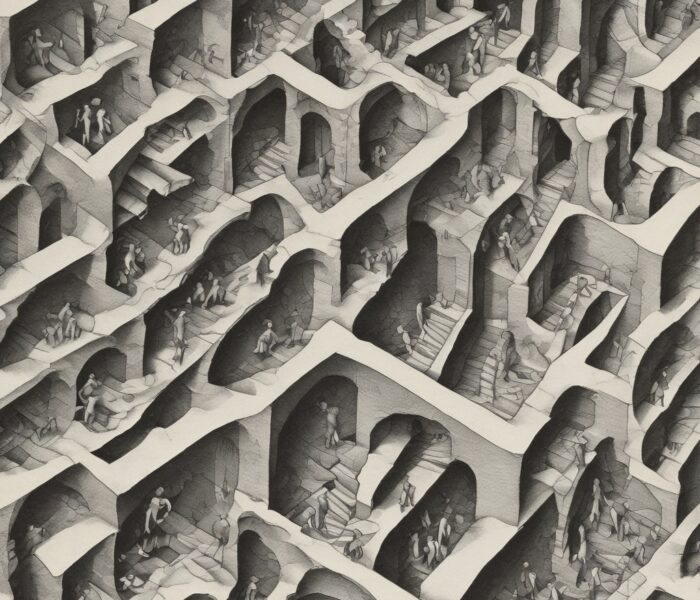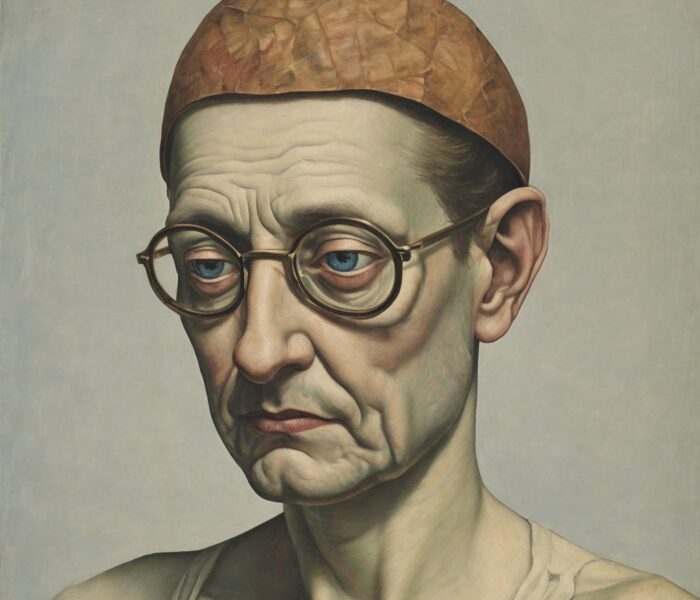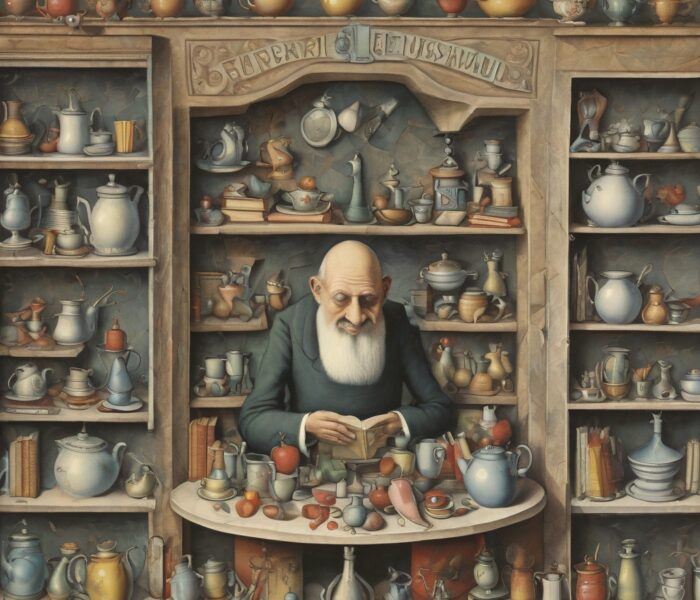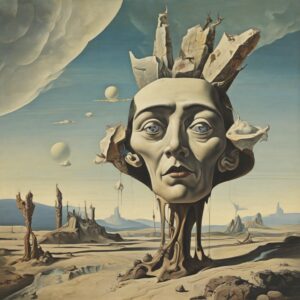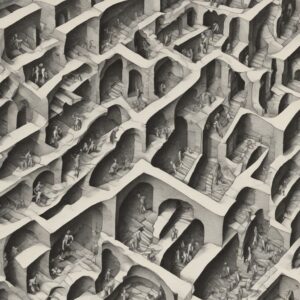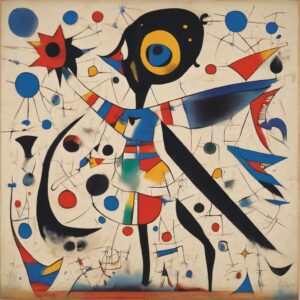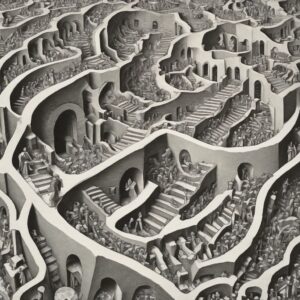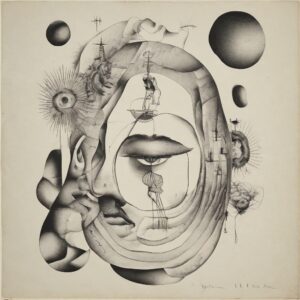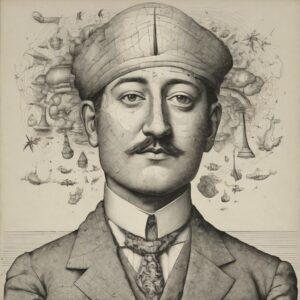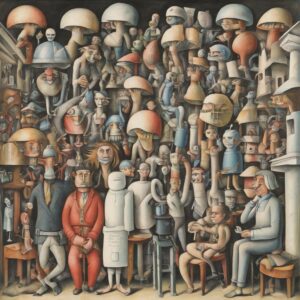An intriguing example is the application of generative AI in the context of Surrealism, an avant-garde art movement of the 20th century known for its fantastical and dreamlike representations that often lie beyond the boundaries of rational reality.
Surrealism was characterized by a strong emphasis on the unconscious, the dream world, and the subconscious. Artists such as Salvador Dalí, René Magritte and Max Ernst created works that blurred the boundaries between reality and fantasy, creating a world full of enigmatic symbols, metaphorical images and surreal sceneries.
The use of generative AI in the context of Surrealism offers a unique opportunity to explore the aesthetic principles and expressions of this movement and to develop new artistic expressions. By analyzing data on surrealist paintings, sculptures, and collages, AI can learn to mimic the characteristic techniques and motifs of surrealism and generate its own interpretations.
A central feature of Surrealism is the distortion and transformation of objects and shapes to create a surreal and dream-like atmosphere. Generative AI algorithms can mimic these techniques and produce works that capture the irrational and fantastical elements of surrealism.
Another important feature of Surrealism is the use of symbols, metaphors, and allegorical motifs to express hidden meanings and emotional states. Generative AI can learn to recognize these symbolic elements and capture them in their generated works by analyzing and interpreting data about archetypal symbols, dream symbols, and surrealist motifs.
The use of generative AI in the context of surrealism opens up new possibilities for creative exploration and experimentation. Artists can interact with AI algorithms and collaborate to create new artworks that interpret and expand on the aesthetic principles of Surrealism in innovative ways.
However, it is important to emphasize that the use of generative AI in the art field also raises ethical questions, especially in terms of originality, authorship, and cultural appropriation. Artists using generative AI should be aware of these issues and use the technology responsibly to ensure that their work meets ethical standards and maintains integrity and authenticity in the art world.
What are important aspects in the generation of artistic surrealism using AI?
The generation of the Surrealism art style requires careful consideration of several important aspects in order to successfully capture the characteristic features and unique atmosphere of this art movement:
- Analysis of Surrealist artworks: A crucial step in generating Surrealism styles with AI is the in-depth analysis of a wide range of Surrealist paintings, sculptures, and other artworks. This includes the exploration of various techniques, motifs, and themes typical of Surrealism, such as the distortion of forms, the combination of unexpected elements, and the emphasis on the unconscious.
- Distortion and transformation of objects: Surrealism is known for its use of distortion and transformation to create a surreal atmosphere. Generative AI algorithms can mimic these techniques and produce works that present surreal and dream-like scenarios by altering the shapes of objects and creating unexpected combinations of elements.
- Emphasis on Symbols and Metaphors: Another important feature of Surrealism is the use of symbols, metaphors, and allegorical motifs to express hidden meanings and emotional states. Generative AI can learn to recognize these symbolic elements and capture them in their generated works by analyzing and interpreting data about surrealist symbols and motifs.
- Experimental approaches and creative exploration: Surrealism was characterized by experimental approaches and a creative exploration of new forms of expression. When generating surrealism styles with AI, it’s important to be open to new ideas and innovative techniques, and to explore ways in which AI can push the boundaries of surrealism.
Overall, generating the Surrealism art style with the help of AI requires careful analysis of the characteristic features and a creative approach to successfully capture the unique atmosphere and surreal elements of this art movement. By combining human inspiration and machine intelligence, new works can be created that bring the timeless principles of surrealism into a modern and technologically advanced era.
